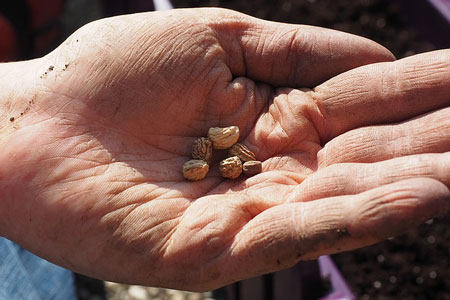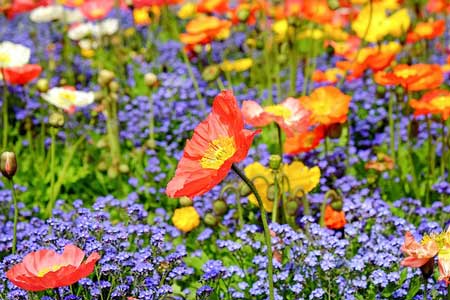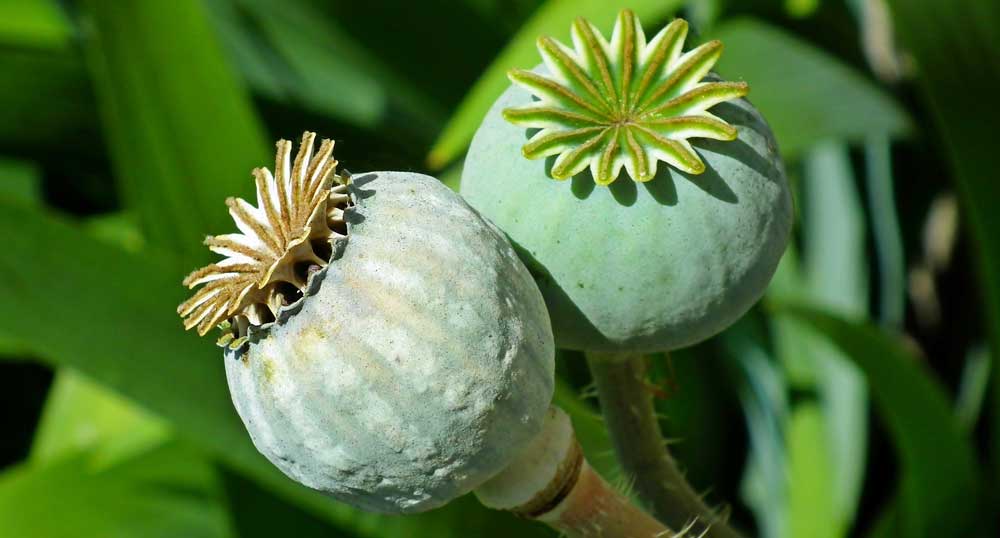November Gardening
Sowing seeds for Autumn & Winter veggies
November is action stations for the seed-sowing vegetable gardeners. So much has to be sown to keep us going through autumn and winter – carrots, parsnips, beetroot, silverbeet, parsley, celery, leeks, cabbage, broccoli and the summer tribe of pumpkins. This is a good time to plant your favourite summer vegetables such as courgette, cucumber, peppers, pumpkin and squash all of which need long hours of full sunshine.

Courgettes/Zucchinis
Courgettes are wonderful for first time gardeners because they are easy to grow and produce an abundance of fruit. They only require fertile well drained soil with some Nichol's compost. Courgette ‘Blackjack’ is the most popular but the yellow variety is more disease resistant.
They are water hungry plants and may cease to produce flowers and fruits if the ground becomes too dry. A sure sign of not enough water is the fruit going yellow and brown at the ends. Excess courgettes will grow into marrows, and picked in autumn when their skin is rock hard, will keep well to use as a winter vegetable.
Pumpkins
Pumpkins are heavy feeders and need a long growing time to mature here in the south. Select a sunny position and dig a hole, fill it with plenty of Nichol's compost and Norlake Sheep Pellets, then plant them with plenty of room to spread or climb. Most pumpkins grow on big trailing stems that stray up to five metres.
If space is limited, construct a wigwam with stout strong stakes and some netting to encourage growth upwards. This will produce a lovely display of golden chalice flowers with the fruit developing at eye level instead of being hidden under large leaves. Which colour of pumpkin – apricot, orange, yellow, green, ivory, pewter grey - do you want to look at this summer?
Harvest pumpkins when vines begin to die off. It is important to pick with a small piece of stalk attached because an open wound will rot. Test the skin with your thumb nail and if the skin is rock hard the pumpkin will keep for months.
Cucumbers
Cucumbers are full of vitamins and thrive best in rich soil with plenty of heat and moisture and in ventilated conditions. Cucumbers grown vertically with fruit hanging are an attractive sight and less likely to attract fungal diseases than the plants that wander along the ground in damp warm conditions. Downy mildew is a common disease of these vegetables so pick off the blotched and yellow leaves and spray with Yates Bravo.
Capsicums
Capsicums are in the same family as Chilli Peppers but are not as hot. They contain vitamin C, other antioxidants, and natural anticoagulant properties.
Tomatoes
Tomatoes often grow at an astonishing rate and need staking but you will also have to be alert to avoid trouble with all the laterals sprouting at the leaf joints. Every week check and remove these laterals or they will elbow their way through the greenhouse using up all the plant's energy to produce masses of greenery instead of producing nice red tomatoes.
After the first truss has formed start feeding your tomato plants with Nichol's Super Crop. Regular deep watering is required through summer and if older leaves begin to roll upwards this is a sign of fluctuating temperatures and more ventilation is required.
To pollinate the flowers simply shake the first truss and pollination is done.
Vegetable Garden
- Sow some more peas, carrot, and beetroot.
- Don’t delay sowing your parsnips either because they need a long growing time.
Plant another row of potatoes every three or four weeks and enjoy new potatoes all summer long. Earth up potatoes as they grow by gently hoeing the soil up around the plants. They produce potatoes on the stem above the mother potato so it is important to keep hoeing earth up around the stems to stop young potatoes emerging into daylight which will turn them green and toxic.

Flower Garden
November flower gardens have all the sparkle and freshness of a new summer.
- Flaunting peonies, poppies and irises should be habit as they reach their peak and deserve many admirers.
- Oriental poppies welcome summer by simply throwing off their caps and unravelling their crumpled petticoats into beautiful chiffon blooms in a range of pinks and reds.
- Aquilegia in various old fashioned shades of lilac, mauve, purple and lemon will grow happily in any sort of soil, gently revealing their lovely muted shades that never jump out.
- As we're at the tail-end of Spring and still prone to wild spring winds slamming into the garden, take precautions to stake established perennials to a third of their expected height.
- Tie loosely and leave a little room for movement as thier brittle succulent stems will snap where the string is attached if tied too tightly.
- The peony tribe tend to slouch about but, should they lean too far, an excellent support for them is a metal semi-circle with long legs (plant hoops) that push into the ground – just the ticket for gardeners who hate staking. And, you hardly notice them.
- Delphiniums are real trouble: if tied too loose they snap and if too tight they snap. I thought that I needed a degree in delphinium staking until I discovered ‘grid’ staking. The secret is anticipation!
- Before they begin sending up their stately spires put in some canes around the clump attaching string around the stakes then weaving the string in an out and back and forth between the stems. This will keep the plants in their natural shape and the foliage will quickly conceal the stakes as if fluffs out.
- Clematis is so easy to include in an existing garden even when every inch of ground space is filled. Features such as fences, walls, veranda posts and arches can be used to support many more plants. Newly purchased fast growing clematis will need some help by carefully fanning out the young tendrils over trellis or wires in order to display their lovely flowers without an unsightly bunched up birds nest effect.
- Difficult shaded areas can be enhanced greatly with Solomon’s Seal arching their long stems of green tipped dainty white flowers.
- Thalictrum will fill a gap in any part of the garden with a cloud of little lilac flowers and the lacy leaves will lighten any garden.
- New Lobelia ‘Hot Springs’ has arrived with the promise of even more flowers on every plant to bloom all through summer, creating beautiful compact mounds of blue white or pink in your garden, pots, and patio planter boxes.
Our 4-pack perennials include:
- Campanula that bloom with bell flowers of blue, pink and white
- Geraniums will highlight spots in the garden as well as pots on the terrace
- Pretty salmon pink Diascia produces a very long summer flowering period
- White Bacopa. bring happy, dainty clusters of flowers to either pot or border flower garden positions.
The amazing colours of perennial petunias take some beating for sheer flower power whether planted in the garden or pots and there are new varieties arriving every season.
In the rose garden keep a watch out for aphids as just one aphid can become five thousand almost overnight. When droves of aphids appear squashing is out of the question so you will need to spray with Yates Shield which is a systemic spray that goes into the sap of the plant and should give better protection during the showery weather of spring.
Happy Gardening Everyone

12500